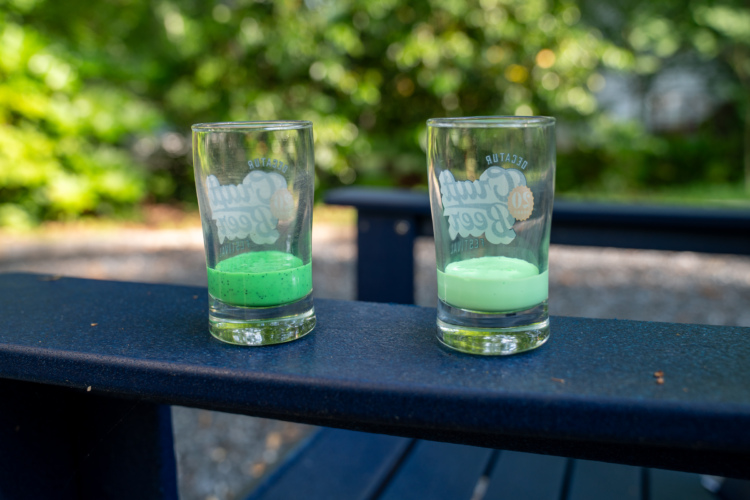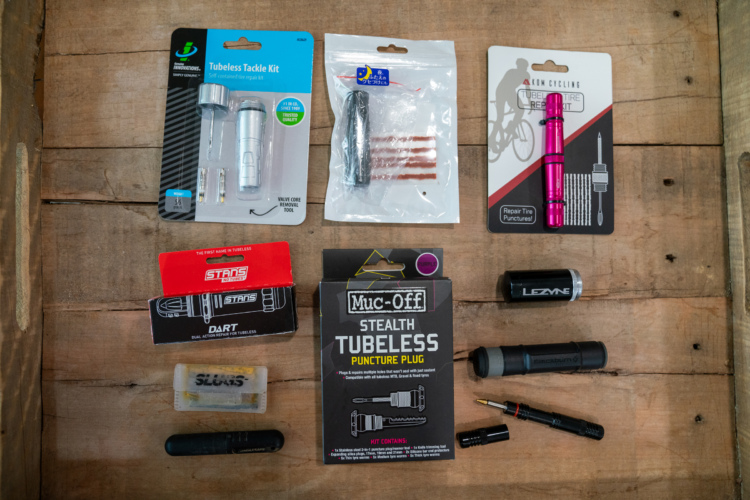
Thinking back on your life at an old age, there will be defining moments that will bring a smile to your weathered face as you sip Arnold Palmers on your front porch and remember “the good ole days.” Your first kiss. Your wedding day. Your child’s first words. And, of course, the day you started riding tubeless mountain bike tires.
I converted to tubeless about seven years ago and have not looked back. Though I am still somewhat in shock that 38% of polled Singletracks users still use tubes, the rest of us have a different set of first-world problems: finding the perfect sealant, that lasts. Some sealants stink like old fish, while others have valve-clogging glitter, and still others have sticky latex. All of them share a common problem: none of them last an entire calendar year, and are often messy to top off.
Enter the idea behind the Orange Seal Endurance Sealant with Injector System, a liquid designed to stop leaks and last longer than the Orange Seal Regular version.
Full disclosure: over the past several seasons, I’ve swapped sealant brands based on shop and rider recommendations, and have been running Orange Seal Regular Sealant, which I have been pretty happy with. Regardless of the brand, however, riding in the mountains and desert takes a toll on sealant, and I typically have to replace it every 2-3 months to avoid risking a flat on a long, epic ride.

I had the opportunity to test the Endurance version this summer for about two and a half months. Not only do I do the most riding during this season, but the temperatures are hotter and I tend to ride unforgiving terrain more often, littered with sidewall-slicing rocks and buried cactus needles. I ran both the Endurance (supplied) and the Regular (purchased) sealant in three different bikes, and what I discovered surprised me.
I tested both sealants using the following tires in the following riding conditions:
- Downhill bike: Maxxis Minion DHF/DHR 2.5, 3C, EXO (non-DH casing) — 6 weeks
- Trail bike: Maxxis Minion DHF/DHR 2.3, 3C, EXO — 2.5 months
- XC/AM — Fat bike: 45NRTH Flowbeist/Dunderbeist 4.6 — 2.5 months
For comparison, I typically ran the Endurance version in the front tire, and the Regular version in the rear tire. However, because I have run the Regular version for the past year in these bikes, I did install the Endurance version in both front and rear tires when it was time to change sealant (the fat bike), basically to get an idea of how it “aged.” I rode a lot of downhill and trail this spring/summer/fall, and I was hard on tires. Really hard. Although the rear tire took most of the abuse, I felt that they received equal punishment in challenging terrain and tested the limits of any sealant.
Flats
After hundreds of miles of riding this season, I only suffered one catastrophic flat that the Orange Seal failed to seal–and it was the Endurance version. It was a 1/4 inch pinch flat on the corner of a knob on the Maxxis Minion DHR on my DH bike. To be fair, I even tried to use a tire plug, and the sealant still would not stop the leak. I landed ugly in some chunky rocks, and despite 10 minutes of sweet talking my sealant and praying to the latex gods, I had to walk down the hill and find a tube (which also flatted on the next run, ironically). It gave me a lot of time to think about all of the other flats that the Orange Seal sealant helped me avoid that I probably will never know about. Case in point: in April, I rode 11 straight days–hard–in Moab, Sedona, Hurricane, and Fruita using Orange Seal Regular, and did not have a single tire issue. Pretty amazing considering the cacti I encountered, and the fact that I had to replace those tires just a few weeks later.
Does it work?
For those of us that use Orange Seal Regular, we know it works, so the question is: does the Endurance version last longer, and does it work as well?
Before I answer that, I want to talk about a couple of innovations that make the Orange Seal easier to use than some of their competitors. The first is the Injector system, which allows a user to unscrew the removable valve stem core, hook up a clear hose, and inject Orange Seal directly into the tire without having to break the bead and unseat the tire from the rim. It’s fast, simple, and downright genius… without having to purchase or screw on an aftermarket injector bottle.

The only problem is, how do you know when you need to replace the sealant? Orange Seal recognized this problem, and came up with an elegant solution: a sealant dipstick. Once you remove the valve stem core, insert the dipstick into the tire (which obviously needs to be on the ground with the valve stem in the 6 o’clock position), remove it, and you can determine how much fluid is on the end of it. So simple, yet a clever innovation.

Conclusions
At the end of my 10-week riding period, comparing the Endurance vs the Regular iterations in all tire types, here is what I discovered:

Longevity: Both the Regular and Endurance versions had plenty of silky liquid ready to plug a hole. Interestingly, though, they looked different. The Endurance seemed thicker, and was a different color. The fat bike sealant seemed the freshest, and it admittedly saw the fewest rides and was stored in my cool garage more of the time. All in all, the Endurance version did seem fresher than the Regular version.

Residue: For those of you familiar with this and other brands of sealant, there are distinct things that happen when the sealant works to seal a leak. In my experience, the Regular version will start to form a thin film over the layer of the tire, and often planes of film that traverse the cross section of the tire, which I think help to seal off leaks as the chemicals oxidize and break down over time. The Endurance version, instead, seemed to have more of a beading residue, and not as much film, which makes me wonder if it is breaking down slower (but also not forming a barrier to seal small cracks or leaks until there is a larger puncture). Interestingly, the Endurance version also formed a compound glop of sealant over a presumed puncture… something I’ve never seen before with the Regular version, but is commonly known as a “Stan’s Booger” in their strongest competitor’s version. This glop was firmly attached to the wall, had a folded tubular shape, and as far as I could tell, had successfully sealed a leak. The Regular was almost completely dried up in the rear tire, and was completely dry in the front tire, after three months. Some of this may have been caused by a leak, but again, the Endurance version seemed fairly fresh even after 10 weeks in all tires.
Smell: Unlike some of their competitors, both the Orange Seal Regular and Endurance versions had a relatively pleasant smell, even after riding in the hot sun for weeks.
Bead Adherence: Overall the tires maintained an excellent bead seal throughout the test period. Only one of the tires, the Flowbeist, mounted to a Whisky Carbon fat bike rim, had difficulty maintaining a seal using the Endurance version. I only mention this because I have used the Regular version with this rim for the past several months without any problems, and neither the rim nor the tire seem to have any damage that might cause a leak. This was the only tire, out of all of them, using both versions, that lost any considerable pressure (>10psi in one week).


Overall Impressions
Sealant is affected by where you ride, how you ride, and the climate that you live in. One thing is for sure: both of these Orange Seal versions work. What I am not convinced about, however, is if the Endurance version lasts any longer or works any better than the Regular version. Based on 10 weeks of testing, it seems to be, but I am very interested in evaluating how well it does 4, 5, and even 6 months into use. The Endurance is only about $1.00 more per 4oz bottle than the Regular version, so I personally feel that it may be worth trying it, knowing that the Endurance sealant works at least as good as the Regular version, and most likely lasts longer. The cost is, of course, negligible when you are trying to avoid a flat.
MSRP:
- 4oz: $10.99
- 8oz: $16.49
Thanks to Orange Seal for sending the Endurance blend over for review!
Check out more photos below for some extra information:

















2 Comments
Apr 24, 2022
Oct 12, 2023
As for the spare tubes, here's a trick I did if anyone find themselves with a punctured tube and is stuck atop a mountain or on the road and a long ways from the car or house: If you forgot to bring contact cement for your patch kit or you don't have a patch kit at all, find out where the hole (or 2 holes for a pinch flat - usually side by side) is. Either tie a knot or use a zip tie to knot out the punctured section. Just make sure the knot is secure enough to block air from entering the tube where the puncture(s) is. Slip the tube back into the tire and rim. Put the tire sidewall back into the rim and pump air until the tire is filled. This works and there won't be a dead flat spot on the tire. This will get you back home or to the car barring another puncture. Repeat the process of knotting out the sections as necessary. You can only knot the tire so much until it can fit onto the rim. :D